Sustainable water management is one of the United Nation’s sustainable development goals (SDGs) and is characterized by a high level of interdependencies with other SDGs from regional to global scales. Many water assessment studies are restricted to silo thinking, focusing mainly on water-related consequences, while lacking a quantification of economic, social, and environmental synergies and trade-offs.
To fill this knowledge gap, we propose a “nexus” approach that integrates 1) a water supply-constrained multi-regional input-output (i.e. mixed MRIO) model, 2) scenario analysis and 3) multi-criteria decision analysis (MCDA) to quantify the trade-offs and synergies at the sectoral level (Figure 1).


Chinese capital regions as the global hotspot
As one of the most serious water scarcity regions in the world, Chinese capital region (the Beijing-Tianjin-Hebei urban agglomeration) was selected as our research area (Figure 2). According to the latest statistics, the capital region is feeding 8% of China’s population (110 million inhabitants) and producing nearly 10% of China’s GDP with only 0.6% of total water availability (18.1 billion m3 in 2017). The freshwater endowment per capita is only 165 m3 (compared to the global average of 7500 m3). The imbalance between economic production and the distribution of available water resources has further hindered sustainable development.
In our recent publication in Water Research journal, we developed a total of 120 industrial transition scenarios including nine major industries with high water-intensities and water consumption under current development pathways, to facilitate the synergy and trade-off analysis between economic loss, social goals (employment) and environmental protection (with grey water footprint representing water pollution) triggered by water conservation measures (Figure 3).
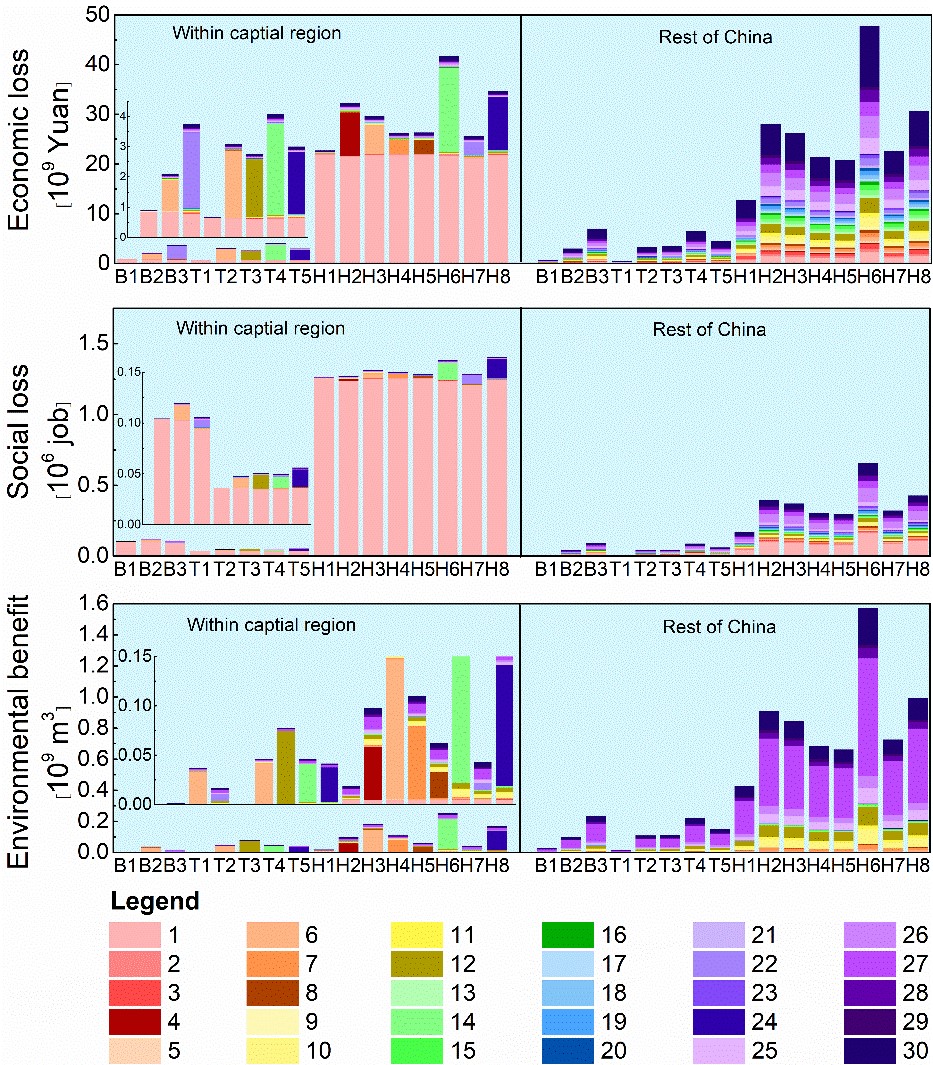
Water conservation will lead to multifaceted results
Our simulation results show that imposition of a tolerable water constraint (a necessary water consumption reduction for regional water stress level to move from severe to moderate) in the region would have multifaceted results: in an average economic loss of 10.8 (±2.5) billion USD, or 1.3 % of regional GDP, a loss of 1.94 (± 0.18) million jobs (i.e. 3.5 % of the local workforce) and a reduction of 1.27 (± 0.40) billion m3 (2.2%) of the regional grey water footprint (Figure 4). In contrast, tolerable water rationing in water-intensive sectors such as agriculture, food and tobacco processing, electricity and heating power production and chemicals would result in the lowest economic and job losses with the largest environmental benefits.
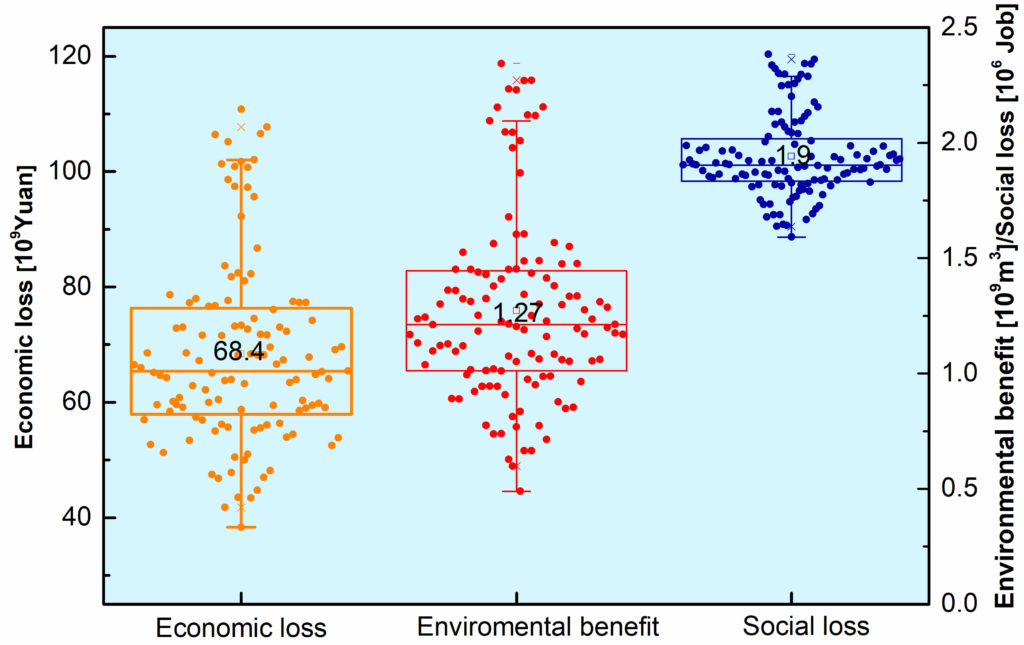
Further, based on MCDA (Figure 5), we selected the 10 best scenarios with regard to their economic, social and environmental effects as references for guiding future water management and suggested industrial transition policies.
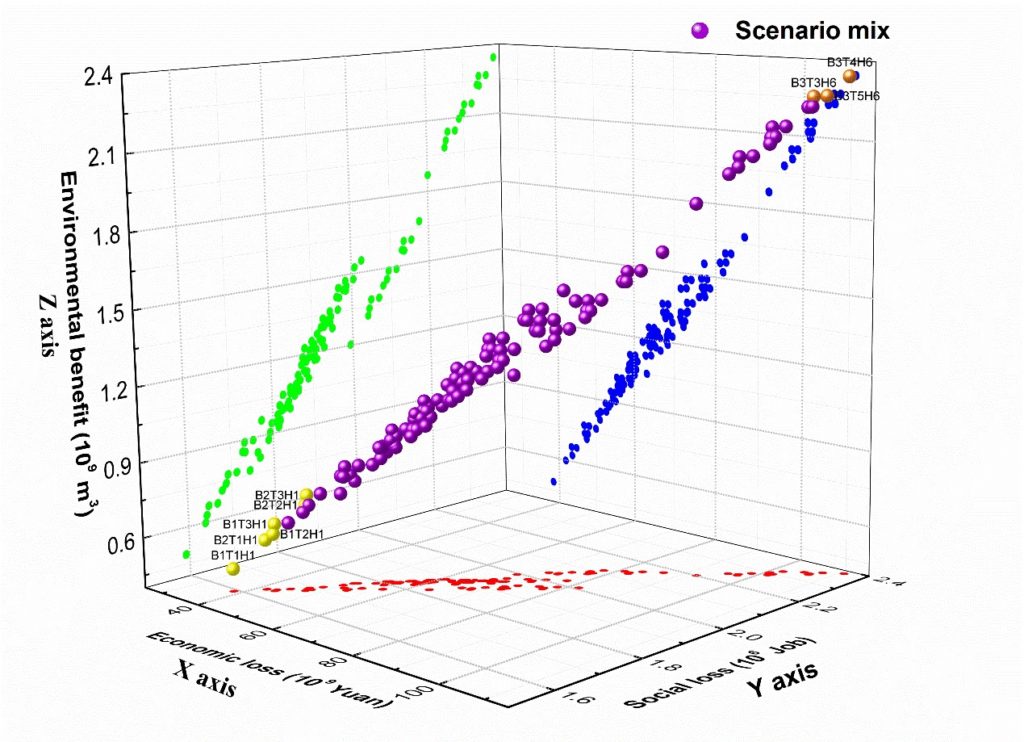
Finally, we propose the potential applications of this toolbox in the future:
- Assessing trade-offs and synergies among multiple criteria and across multiple region-sectors under resource constraints.
- Evaluating the short-term supply-chain effects of different crisis containment strategies to reveal how pandemic-related economic losses will be reallocated along the supply-chains across regions and sectors and potential other impacts, and allows quantification and comparisons between the losses and gains of various mitigation strategies.
- Facilitating more insightful evaluation of SDGs at the regional level so as to determine priorities for local governments and practitioners to achieve SDGs.
Read the full article: Zhao D.D, Liu J.G, Sun L.X, Ye B, Hubacek K, Feng K.S, Varis O. 2021. Quantifying economic-social-environmental trade-offs and synergies of water-supply constraints: An application to the capital region of China. Water Research, 195 (https://doi.org/10.1016/j.watres.2021.116986)
Table 1. The studied industrial sector combinations for Beijing, Tianjin, and Hebei. Decline in economic output for each scenario are presented in the original paper.
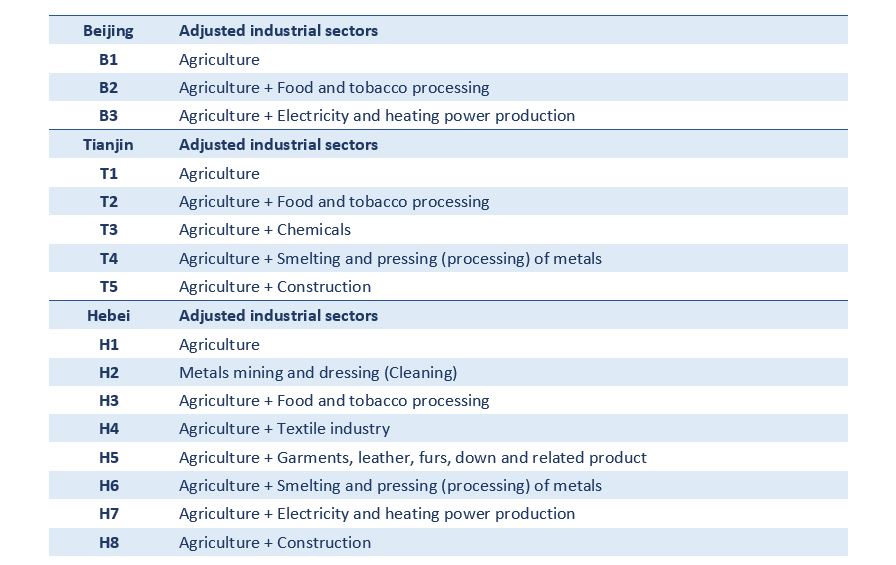
Table 2. The studied industries of primary (1), secondary (2-24), and tertiary (25-30) industries.
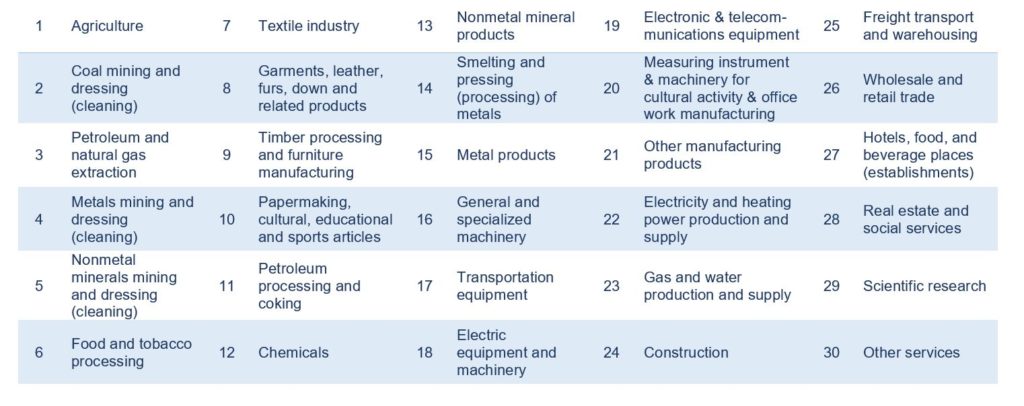

Dandan Zhao works as a postdoctoral researcher in WDRG. Her research interests include water footprint, virtual water trade, ecological economics, environmental input-output analysis and water-energy-food nexus.

